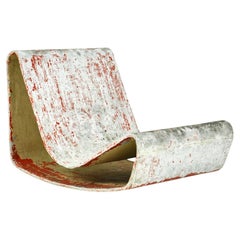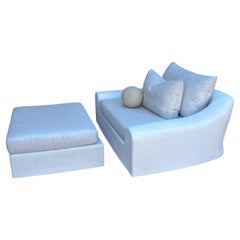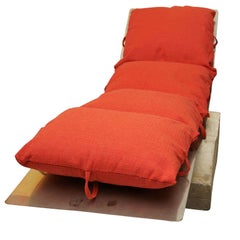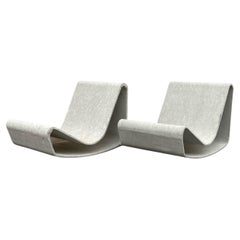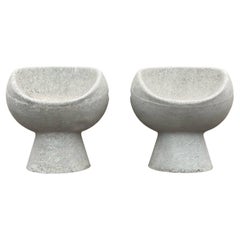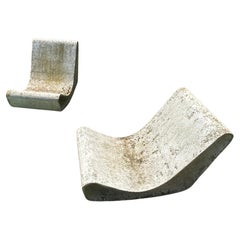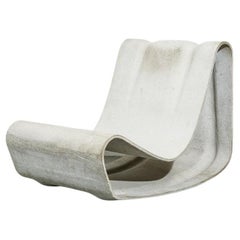20th Century Concrete Lounge Chairs
Vintage 1950s Swiss Mid-Century Modern Armchairs
Concrete, Cement
Mid-20th Century Swiss Modern Lounge Chairs
Concrete
Vintage 1980s American Modern Lounge Chairs
Concrete
Mid-20th Century North American Lounge Chairs
Concrete
20th Century Italian Modern Chaise Longues
Concrete, Stainless Steel
Mid-20th Century French Mid-Century Modern Patio and Garden Furniture
Concrete
Vintage 1970s French Space Age Patio and Garden Furniture
Concrete
Recent Sales
Vintage 1950s Swiss Mid-Century Modern Lounge Chairs
Concrete
1990s Mid-Century Modern Lounge Chairs
Concrete
Mid-20th Century Swiss Modern Lounge Chairs
Concrete
Vintage 1970s Italian Mid-Century Modern Lounge Chairs
Concrete
Vintage 1950s Swiss Mid-Century Modern Armchairs
Concrete
Vintage 1950s Swiss Mid-Century Modern Armchairs
Concrete
Mid-20th Century Swiss Modern Lounge Chairs
Concrete
Vintage 1950s Swiss Mid-Century Modern Lounge Chairs
Concrete
Vintage 1960s European Lounge Chairs
Concrete
Late 20th Century European Bauhaus Lounge Chairs
Concrete
Vintage 1950s Swiss Mid-Century Modern Lounge Chairs
Concrete
Vintage 1950s Swiss Mid-Century Modern Lounge Chairs
Concrete
Mid-20th Century Swiss Mid-Century Modern Patio and Garden Furniture
Concrete
Mid-20th Century Swiss Brutalist Lounge Chairs
Concrete
Vintage 1960s Swiss Lounge Chairs
Concrete
Vintage 1950s Swiss Mid-Century Modern Lounge Chairs
Concrete
Vintage 1960s Swiss Mid-Century Modern Lounge Chairs
Concrete
Vintage 1950s Swiss Lounge Chairs
Concrete
Vintage 1950s Swiss Mid-Century Modern Lounge Chairs
Concrete
Mid-20th Century Swiss Mid-Century Modern Lounge Chairs
Concrete
Vintage 1960s Swiss Lounge Chairs
Concrete
Vintage 1950s American Chairs
Concrete
Vintage 1950s Austrian Lounge Chairs
Concrete
Vintage 1950s Swiss Modern Lounge Chairs
Concrete
People Also Browsed
Mid-20th Century French Mid-Century Modern Wall Lights and Sconces
Iron
Vintage 1930s Czech Art Deco Lounge Chairs
Beech, Sheepskin
Antique Mid-19th Century English High Victorian Taxidermy
Other
21st Century and Contemporary Italian Modern Sofas
Metal
21st Century and Contemporary American Chandeliers and Pendants
Brass
21st Century and Contemporary Italian Mid-Century Modern Flush Mount
Metal
2010s South African Minimalist Pedestals
Burl, Poplar, Wood
21st Century and Contemporary Italian Mid-Century Modern Table Lamps
Brass
2010s Italian Mid-Century Modern Table Lamps
Brass
21st Century and Contemporary American Modern Coffee and Cocktail Tables
Art Glass, Cut Glass, Walnut
Early 2000s Swiss End Tables
Cement
Vintage 1950s American Mid-Century Modern Sofas
Fabric, Walnut
2010s Italian Organic Modern Chandeliers and Pendants
Natural Fiber
2010s Mexican Post-Modern Side Tables
Onyx
2010s Table Lamps
Iron
21st Century and Contemporary Italian Modern Coffee and Cocktail Tables
Blown Glass
20th Century Concrete Lounge Chairs For Sale on 1stDibs
How Much are 20th Century Concrete Lounge Chairs?
Willy Guhl for sale on 1stDibs
Decades prior to the mass popularity of neo-industrial cement floors and furniture taking shape, there was Willy Guhl. The Swiss creative is considered one of the first “industrial” designers in his home country. He pioneered a rugged, organic style of modern furniture and decor — stylish planters, shapely seating and lots more — that remains widely coveted by many today.
Guhl was born in 1915 in Stein am Rhein and worked as a carpenter before beginning studies at the Zurich School of Applied Arts (known today as the Zurich University of the Arts), where he would go on to teach for nearly 40 years.
While Guhl is well-known for his range of provocative garden elements as well as his patio and outdoor furniture, today’s legion of mid-century modern enthusiasts are likely familiar with the designer’s iconic Loop chair (introduced in 1954). For this sculptural seat and other furnishings, Guhl tended toward industrial materials, which he bent and shaped into organic forms for a striking juxtaposition. Much of his work is crafted from either concrete or Eternit, a mixture of cement and asbestos developed by the Belgian company Etex, which, in the 1950s, commissioned Guhl and his students at the School of Applied Arts to conceive planters in the material. The resulting vessels — some hourglass-shaped, some in the form of handkerchiefs, all suitable for indoors or exteriors — remain some of Guhl’s most collectible pieces.
Guhl’s affiliation with the Swiss “neo-functional” movement centered on the idea of simplifying design without sacrificing form. According to Guhl, his mission was “achieving the most with the minimum of effort.”
In addition to his work as a designer, Guhl left his mark on subsequent creatives through his 39-year tenure at his alma mater, where he was instructor to the likes of Robert Haussmann, Kurt Thut and Bruno Rey. Modern-day shoppers at IKEA owe Guhl a debt of gratitude too. He was an early advocate of flat-pack furniture, championing its ability to make good design more widely accessible.
At its core, though, Guhl’s work was inherently human-centric: “At the center of my efforts, I put people and their living requirements,” he once said. “My products must be useful to people.” Guhl died in 2004 at the age of 89.
Find a range of vintage Willy Guhl furniture and decorative objects on 1stDibs.
Finding the Right Lounge Chairs for You
While this specific seating is known to all for its comfort and familiar form, the history of how your favorite antique or vintage lounge chair came to be is slightly more ambiguous.
Although there are rare armchairs dating back as far as the 17th century, some believe that the origins of the first official “lounge chair” are tied to Hungarian modernist designer-architect Marcel Breuer. Sure, Breuer wasn’t exactly reinventing the wheel when he introduced the Wassily lounge chair in 1925, but his seat was indeed revolutionary for its integration of bent tubular steel.
Officially, a lounge chair is simply defined as a “comfortable armchair,” which allows for the shape and material of the furnishings to be extremely diverse. Whether or not chaise longues make the cut for this category is a matter of frequent debate.
The Eames lounge chair, on the other hand, has come to define somewhat of a universal perception of what a lounge chair can be. Introduced in 1956, the Eames lounger (and its partner in cozy, the ottoman) quickly became staples in television shows, prestigious office buildings and sumptuous living rooms. Venerable American mid-century modern designers Charles and Ray Eames intended for it to be the peak of luxury, which they knew meant taking furniture to the next level of style and comfort. Their chair inspired many modern interpretations of the lounge — as well as numerous copies.
On 1stDibs, find a broad range of unique lounge chairs that includes everything from antique Victorian-era seating to vintage mid-century modern lounge chairs by craftspersons such as Hans Wegner to contemporary choices from today’s innovative designers.
